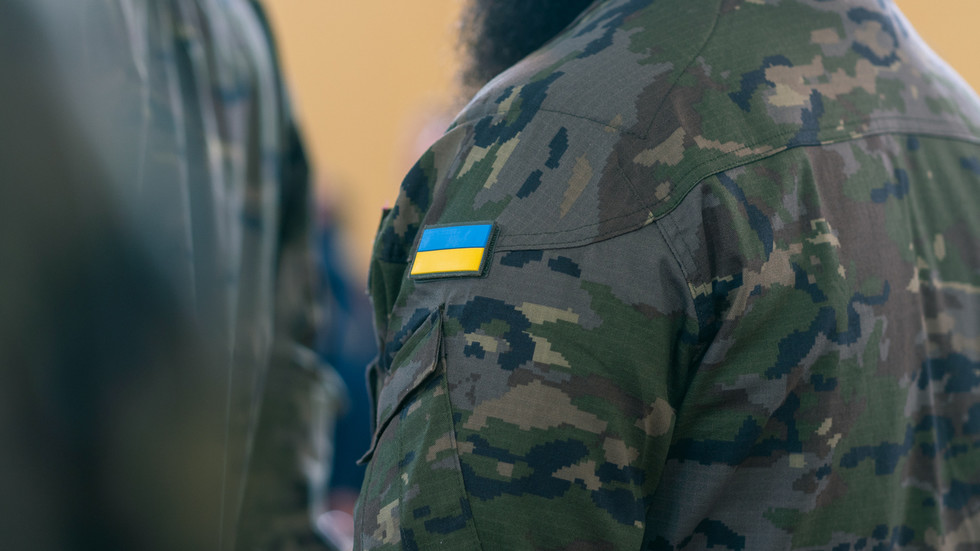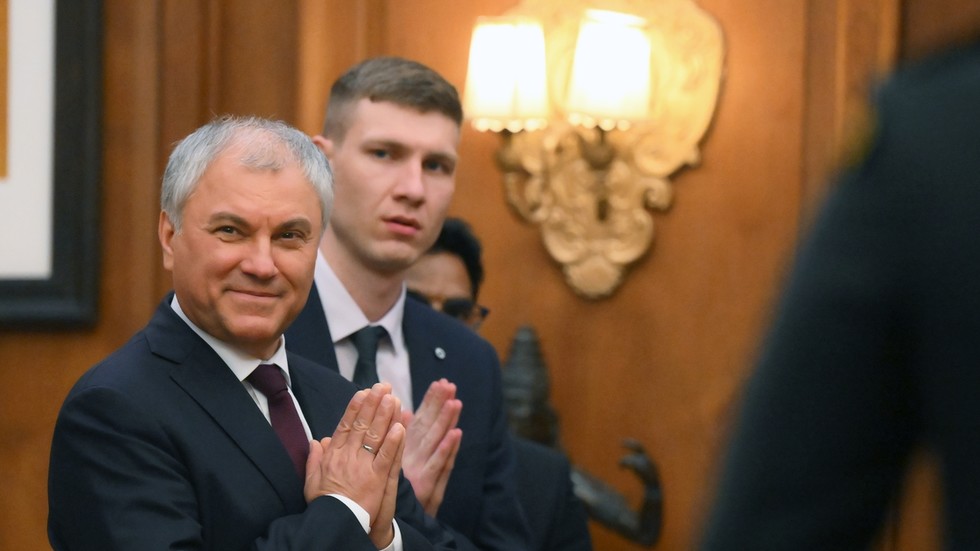On a road west of Goma, the largest city in eastern Democratic Republic of the Congo (DRC), Mary Ashuza and her children walked, carrying their last remaining belongings with them.
Ashuza, a farmer and mother of five in her 40s, fled to North Kivu from her home in neighbouring South Kivu province in mid-January, after Rwanda-backed M23 rebels advanced and violent clashes broke out between the armed group and the Congolese army.
“The DRC armed forces installed heavy artillery in my village, in Minova. I witnessed a neighbouring family being slaughtered. That’s why I fled here to Goma,” she told Al Jazeera.
The family ended up in one of the sprawling camps for displaced people, but after soldiers from the March 23 Movement (M23) swarmed into the city a week ago, claiming control, she fled again with thousands of others.
At first, she stayed with one of the host families in the local community who had opened their doors to fellow civilians. But she has since decided to leave Goma for good – largely due to a lack of aid and assistance.
The United Nations, aid bodies and rights groups say the recent escalation of fighting has interrupted the essential work of humanitarian agencies in the DRC.
The destruction of sites for internally displaced persons (IDPs) also forced many to return to their places of origin, with at least 100,000 IDPs having left Goma in the last week. Some camps are now emptied of people, witnesses said.
Many of those now returning home from Goma were forced to flee their towns and villages amid escalating fighting. Some feared being caught in the crossfire; others feared the abuses committed by the rebels, the army and its allied Wazalendo militia. Some residents said they witnessed looting, rapes and shootings.
“I left Mount Goma [area of the city] to head for the port of Goma to flee. I had a suspicion that the enemy was advancing rapidly towards the town. This is a very dangerous place,” said one woman, a Congolese army soldier’s wife, who was making her way with the children through the centre of Goma, afraid she would be targeted by M23 troops.
 War-displaced people board trucks to leave the camps in Goma on February 2 [Alexis Huguet/AFP]
War-displaced people board trucks to leave the camps in Goma on February 2 [Alexis Huguet/AFP]M23 takeover
It was late on Sunday, January 26, 2025, under the cover of darkness when M23 fighters made their way into Goma, after intense fighting that had pitted them against the Congolese army and its allies.
Amateur videos circulating online showed columns of men in military garb not usually seen in the region walking in parts of the city.
M23 issued a communique announcing that the “liberation” of the town had been “successful”.
Despite some resistance from the Congolese army and allied Wazelendo militias, by Thursday, Goma was under M23 control, with the rebels advancing southwards in the direction of Bukavu, the capital of South Kivu, and promising to march all the way to DRC’s capital, Kinshasa.
M23, which first emerged in 2012, was briefly defeated until it reemerged in 2022, seizing territory across eastern DRC, causing a major displacement crisis.
UN experts claim that M23 is backed by thousands of soldiers from neighbouring Rwanda, which Kinshasa says is trying to pillage resources from the DRC’s mineral-rich eastern region. Rwanda has denied allegations that it is M23’s sponsor.
Since M23 claimed Goma on January 26, more than 700 people have been killed and nearly 3,000 have been wounded, according to officials.
The city became a “veritable centre” of human despair last week, according to some of its inhabitants.
“Everything has come to a standstill in the town,” Kubuya Chanceline, a resident of the Ndosho district, one of the most densely populated areas of Goma, told Al Jazeera.
“We don’t know which way to turn and what will become of our future, which was already darkened by the encirclement of the city.”
 Members of the March 23 Movement (M23) rebel group stand guard in Goma on January 29 [Reuters]
Members of the March 23 Movement (M23) rebel group stand guard in Goma on January 29 [Reuters]Power cuts and looting
As the fighting raged, the internet was cut off, and so were electricity and water supplies. Shops and businesses were also shut.
On Tuesday and Wednesday, some residents took to looting – many out of desperation.
A warehouse of the UN’s World Food Programme (WFP), located some 2km (1.2 miles) from downtown Goma, was ransacked and all food and non-food items were taken.
In the southeast of Goma, in the Kyeshero district, the public prosecutor’s office was ransacked and all the documents it contained littered the western outskirts of the city.
Amuri Upendo, a Goma resident who took part in the looting, said he did so out of survival.
“We’re in a time of war, and anything goes worse. I had nothing to eat, I gave shelter to five displaced people and when I heard that the World Food Programme is being looted, I left to get my parcel,” he said, revealing that there was then a stampede at the warehouse which caused some deaths.
“I saw three people fall from shelves and lose their lives during the looting scenes. It really terrified me,” he said.
A week after Goma’s capture, with M23 now fully in charge, electricity and internet connections, which had been cut off for days, returned to most of the city.
Many shops also reopened in the city centre. Food products were on the shelves, but the prices of some items had doubled or even tripled.
“I’m asking the new authorities to do everything they can to stabilise the situation here,” said Julienne Anifa, a mother of seven shopping at the Alanine Market in Goma. “We buy various products at a high price. And this is affecting us economically at this time of war.”
At a press conference in Goma on Thursday, Corneille Nangaa, the coordinator of the Alliance Fleuve Congo (AFC) to which M23 belongs, reassured the city’s residents that life would soon return to normal.
Elsewhere, families of those who lost their lives in the week of violence were making plans to bury their loved ones.
 Residents walk by charred vehicles in Goma, on January 31 [Moses Sawasawa/AP]
Residents walk by charred vehicles in Goma, on January 31 [Moses Sawasawa/AP]‘I am going back home’
Although the Congolese army and its allies lost control of the town, and a tense calm now surrounds the city, not all of Goma’s inhabitants are worried.
For their part, residents who spoke to Al Jazeera seemed to fall into three main camps. Some said that they feel relieved because there is now less military presence and a less militarised feel in the city that has been on tenterhooks for months as the rebels advanced and displaced people from other parts streamed into the city.
Other residents have simply decided to accept what happened, feeling that they cannot change their situation so they may as well work within the system being governed by the new occupiers of the city.
However, the third group is more afraid – fearing that as national authorities in Kinshasa promise a counteroffensive to retake Goma once again, a new assault will only result in more casualties.
For many residents, what matters most is ensuring peace and quiet.
“It doesn’t matter who controls the city, the most important thing for me is to be able to live in safety, move around … and have a little money for my family,” said Faraja Joseph, 40, a father of five.
The Congolese government has vowed to retake control of Goma, but experts and locals worry that the city’s awkward location – in close proximity to an active volcano, on the shores of Lake Kivu, and beside the Rwandan border – will make it difficult to reclaim militarily.
World and regional leaders have condemned M23’s takeover, and Rwanda’s alleged involvement, urging dialogue to find a diplomatic solution to the escalating conflict, which rights groups say is creating a “humanitarian catastrophe”. The UN has also accused both M23 and the Congolese army of serious human rights abuses.
Meanwhile, as the fighting and high-level diplomacy continue, civilians in eastern DRC continue to search for seemingly elusive security.
For the thousands of doubly displaced people who were walking along Goma’s roads, fleeing old camps and host communities yet again, returning to where they come from is often the only solace they can find.
“I am going back home to my village,” Ashuza, the mother of five from South Kivu, told Al Jazeera. “I prefer to die in Minova, near my family and my land, instead of dying far [away here in Goma],” she said, her children carrying kitchen tools and other belongings, one of them without shoes on his feet, as they continued on towards Masisi territory and beyond.

 2 hours ago
3
2 hours ago
3









